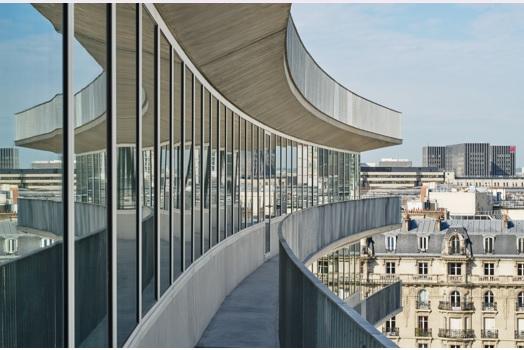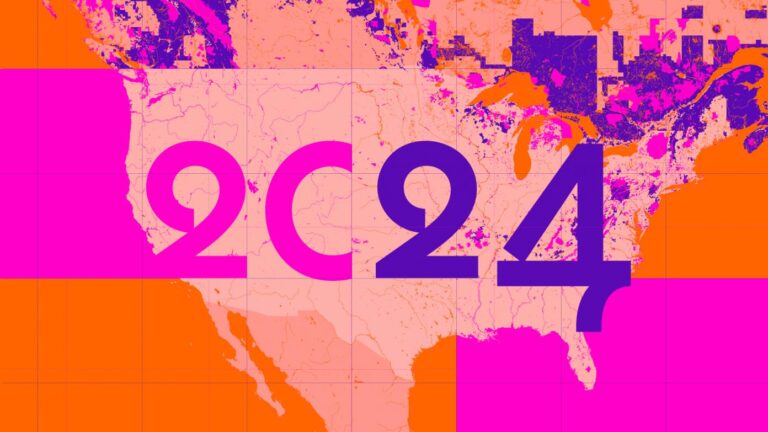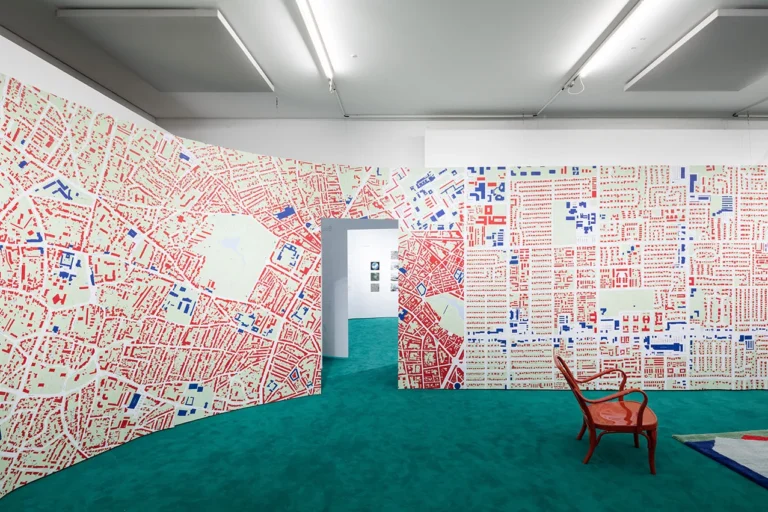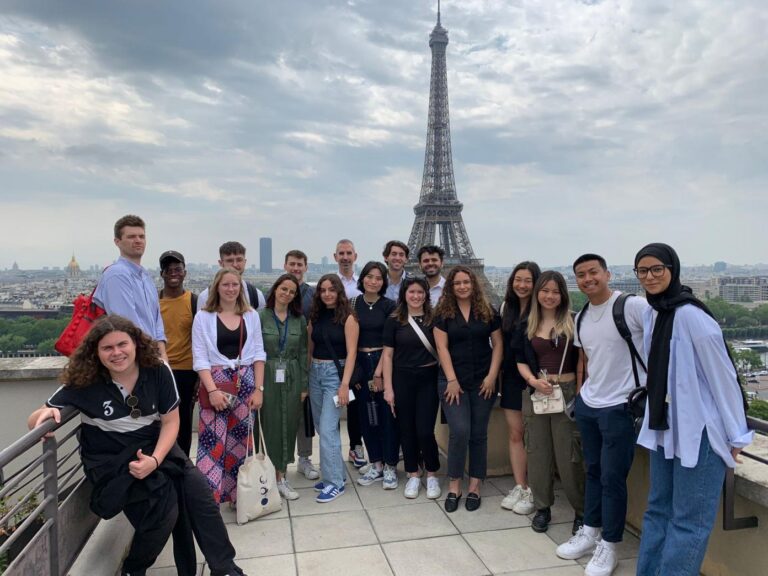
Collectif GRAU
Architects
Winter 2022
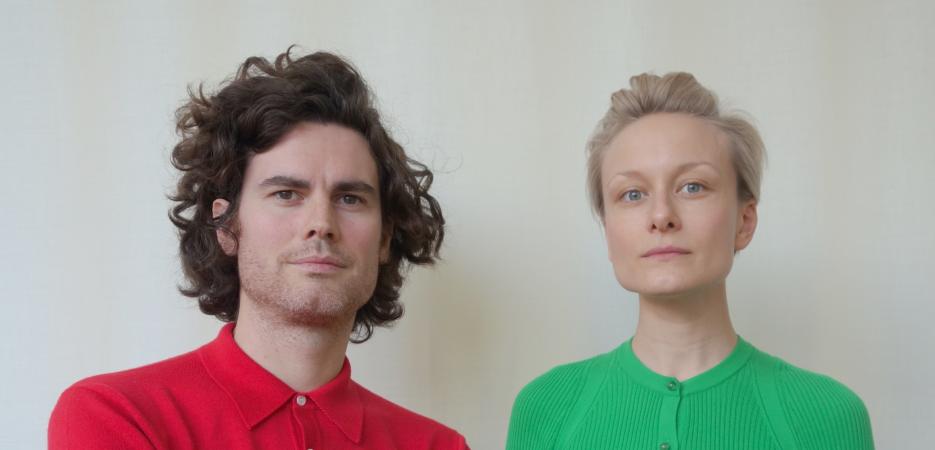
Grau Collectif
- Architecture
- Chicago
“In all our projects, we seek to understand what basic physical structures are required for people to successfully share the same space.”
We’re both graduates of the École Nationale Supérieure d’Architecture in Versailles. Susanne also completed a one-year master’s from the University of Illinois in Chicago. Before we founded our agency, GRAU, in 2010, we worked at the AUC agency for a number of years, on projects such as the Greater Paris study and the new Chapelle Internationale district.
Our work primarily focuses on housing – not because of any specific interest in housing as a form of architecture, but rather because it reflects our cities and the collective relationships we build. The home as a place is both intimate and connected, and encompasses a range of issues, both large and small.
Since 2010, we’ve conducted a number of urban renewal studies on residential areas from the 1950s, 1960s and 1970s. We are currently managing projects to renew the Grand-Parc area and transform the Cité-Claveau, in Bordeaux.
We have also been conducting research for the past several years on the potential of garden cities, which we began as part of a 2014 map-guide for the Caudéran district in Bordeaux, in collaboration with Michel and Claire Corajoud. This research took us to Phoenix, AZ, where we studied the collective housing structures built by US architect Alfred N. Beadle. In 2017, we published “Apprendre de Caudéran” (“Learning from Caudéran”), which examined how Caudéran could be a prototype for future garden cities.
In a completely different context, that of the dense city of Paris, we recently published “2 Pièces.” This work details our research on small-scale metropolitan housing, completed for the Pavillon de l’Arsenal as part of the “Faire” program.
Susanne Eliasson and Anthony Jammes are urban development architects, founders of the GRAU agency, and winners of the 2016 Palmarès des jeunes urbanistes. GRAU (short for “Good Reasons to Afford Urbanism”) operates in the space between architecture and urban planning. Boasting over ten years’ experience in France and Europe, and through a range of urban renewal and densification projects in existing areas, it has expertise in housing-related issues. Susanne teaches in Düsseldorf; Anthony teaches in Versailles.
Since urbanization first began, the city has been the space where we live together: the fact that it provides opportunity, safety, and work, and fulfills our need to connect, is just one of the many reasons that bring us together. Living together in a certain environment requires collective organization, and this always takes a physical form.
We’re interested in the relationship between the existing physical environment and the social structures we build. In all our projects, we seek to understand what basic physical structures are required for people to successfully share the same space. It’s a question of balance between what the public sector offers as a structure and what people do with it–and what kinds of appropriation and freedom are possible.
During our residency at the Villa Albertine, we wanted to examine this link by investigating the relationship residents have with the physical world, and in particular with the grid (road network), which forms such a ubiquitous part of the American urban landscape. That grid, often used to its full potential in dense neighborhoods, allowing for considerable intensity, seems in other cases to eliminate any urban character, especially in lower density areas. As a physical structure, this grid is also intimately linked to livability conditions.
Our project is called “Collective America.” For one month, we met with a raft of Chicagoans, from downtown and other areas. By drawing and writing about their views of the city, and how they interact with the grid structure, we endeavored to understand how they can create opportunities to collectively re-engage with the physical aspect of the city.
These views were published as a collection, and all content were produced on site in real time, during the residency.
Our project focuses on the city of Chicago, where a new urban plan, “We Will Chicago,” is taking shape. While not yet complete, it already signals a new ambition: the people of today will be “the city of tomorrow”. It can be read as a shift in the ways we think about and build our cities, reminding us that architecture and the grid, while ubiquitous, are merely assumptions that must be re-examined every day.
Our work lies at the cross-section between the residents of Chicago, their physical living conditions (in buildings) and the urban grid, to reveal alternative visions of the city to the one we’re generally familiar with.
We also want to draw a link between Chicago and Greater Paris, where we live and work, by exploring the notion of metropolitan identity and what elements we can actually draw on to live and act together.
This exploration of Chicago is a continuation of our daily work. As applied research, our project methodology is based on the reality on the ground, and the link between the social and physical conditions we find there.
While our research is not intended to be a project per se, we sparked a dialogue with Chicago residents and bodies, and provided an opportunity to delve deeper either into our own practice, or expand our academic knowledge as part of our teaching activities.
In partnership with

arc en rêve
arc en rêve centre d’architecture was founded in Bordeaux in 1981. Its mission is to stimulate cultural awareness in the fields of architecture, urban planning and landscaping. The centre’s mission has both widely international and local components, structured around exhibitions, conferences, workshops and experimental activities designed to foster creative initiative, encourage critical thinking, and broaden perspectives of our changing world.

6018|North
Founded in May 2011, 6018|North is an artist-centered, sustainable, nonprofit platform and venue for innovative art and culture. Located at 6018 North Kenmore in Chicago’s Edgewater neighborhood, 6018 North encourages artists to collaborate and reconfigure its intimate space. This intimacy allows artists and audiences to connect in transformative ways. At home and away in other non-traditional spaces, 6018North’s site-specific exhibitions and events include artists performing, creating installations, and directing communal engagement events.


